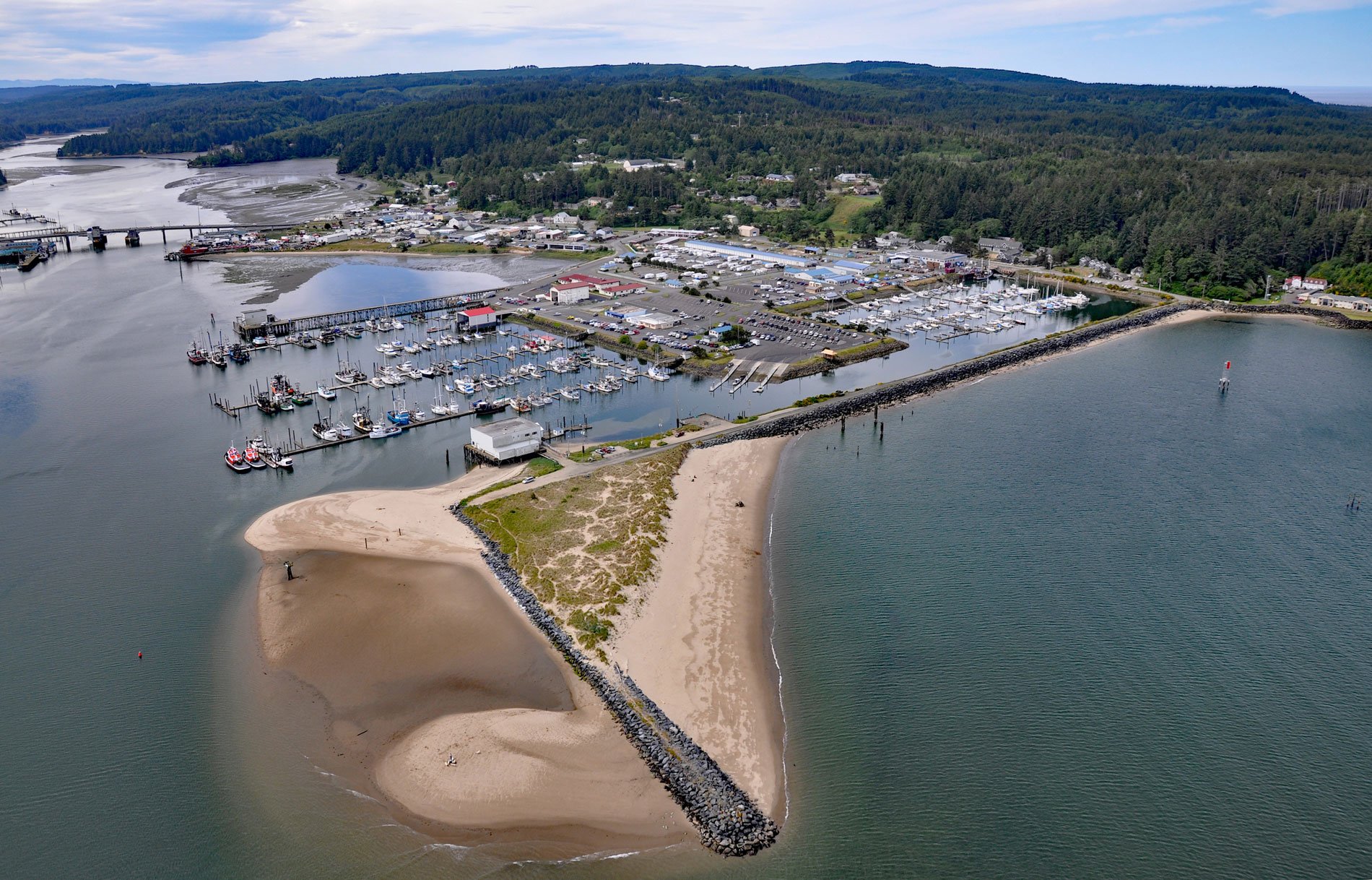Oregon Institute of Marine Biology is the marine station of the University of Oregon located a the mouth of Coos Bay, about 7 miles (11.3 km) southwest of North Bend and 0.3 miles (0.5 km) north of Charleston, Oregon. The University of Oregon has been teaching and conducting research in marine biology on the southern Oregon coast since 1924.
Charleston is on South Slough and adjacent to the ocean entrance for Coos Bay. The community was named for Charles Haskell, a settler who filed a land claim along South Slough in 1853. Today, the harbor is home to a large commercial fishing fleet and the U.S. Coast Guard Station Coos Bay. The South Slough National Estuarine Research Reserve was established in 1974, and covers 4,770 acres (1,930 ha) along the Coos Bay Estuary south of Charleston. It was the first of 29 such reserves in the United States and the only one in Oregon.
In 1878, the first life-saving station was located at Cape Arago below the lighthouse on a small sandy beach. It was a simple structure manned by a single keeper and sparsely equipped. In case of an emergency, the keeper had to rouse a volunteer crew before any rescue attempt. In 1892, Station Coos Bay was moved from the lighthouse to the North Spit of Coos Bay and was a fully manned station. The station moved again in 1915 to the lee side of Coos Head promontory. A larger station was built consisting of a main administration building and quarters, a boathouse, a workshop. The last move for Station Coos Bay was in 1968, to its present location at Charleston Boat Basin. Read more here and here. Explore more of Charleston here:

